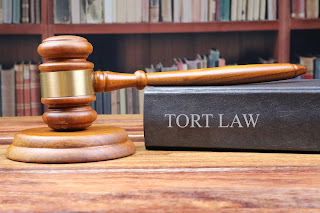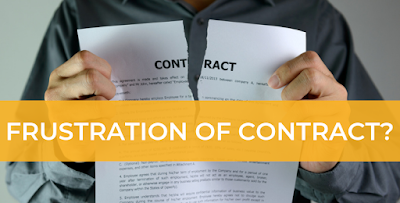“In cases of personal or physical injury, reasonable foreseeability of harm is usually enough...to generate a duty of care. In the case of economic loss, something more is needed” – Lord Hoffman, Customs & Excise Commissioners v Barclays Bank plc (2006)
Duty, breach, causation and damage make up any successful negligence claim. The issue of duty is concerned with whether the law recognises the possibility of liability in given situations, evolving from the fact that law does not grant equal protection to different kinds of damage. Historically, the common law has afforded greater protection to personal/physical injury cases than those of economic loss, thus reinforcing Lord Hoffman’s statement. When speaking about economic loss, it is important to distinguish between financial loss and pure economic loss (PEL), which comprises of financial losses that are not dependent on personal injury or property damage. Morally, the courts prioritise an individual’s well-being as more deserving of protection, thus explaining the narrower scope for duty of care (DOC) in economic loss cases when compared to personal injury cases. Previous cases suggest that foreseeability of harm is enough to generate a DOC in personal/physical injury, but this will not suffice for economic loss, thus supporting Lord Hoffman’s view.
Abiding by the general principles of remoteness in personal injury cases, foreseeability is indeed “usually enough...to generate a duty of care”. The kind of damage simply has to be some kind of personal injury that the reasonable man would be able to foresee. One does not have to foresee the exact concatenation of events that leads to the injury, or the extent of the injury itself. This is illustrated in Hughes v Lord Advocate1, whereby a paraffin lamp kicked over by a child violently exploded. This was not the expected risk of a simple contact burn from a naked flame, yet the House of Lords held that the precise sequence of events was immaterial so long as some harm was foreseen. Similarly, in Page v Smith2 it was decided that once a DOC was generated to avoid causing personal injury to the claimant, it will suffice to ask whether the defendant should have reasonably foreseen that the claimant may suffer any personal injury as a result of his negligence. Lord Lloyd himself said that it is enough that injury of some kind – either physical or psychiatric – had been foreseeable to generate a DOC, thus strengthening Lord Hoffman’s suggestion.
Yet, even with personal injury, there are some cases where foreseeability is not enough and other factors, like proximity, need to be fulfilled for a DOC. In Sutradhar v National Environment Research Council3, the House of Lords decided no DOC was present due to the lack of proximity between the claimants (over 700 Bangladeshi citizens with arsenical poisoning) and the defendant (who published the results of a water survey which was negligently completed). The contentious decision was deemed a “deplorable example of the form of the floodgates argument” by David Howell. This requirement of proximity derived from Lord Bridge’s test in Caparo v Dickman,4 and only applies in novel cases where no precedent exists. For the majority of personal injury cases, therefore, foreseeability of harm is “usually enough” to create a DOC.
Conversely, as Lord Hoffman identifies, in economic loss cases foreseeability may not suffice to generate a DOC as “something more is needed”. The ‘harm’ endured in economic loss cases compared to personal injury cases may provide an explanation for this, as the courts have a fear of the floodgates opening to compensation claims. Furthermore, Lord Denning in the Spartan Steel5 case, invoked the spirit of the so-called ‘Protestant work ethic’, suggesting that law should not encourage people to complain when they have lost profit, but rather incentivise them to ‘work harder’.
An example of “something more” is the ‘assumption of responsibility’ condition required for a DOC in economic loss cases. As the law currently stands, there are situations in which a DOC is recognised in relation to PEL, but these are tightly circumscribed. The most important category where a DOC does exist is liability under Hedley Byrne6 - the first case which recognised the possibility of negligence liability for PEL. Referenced here are the twin concepts of assumption of responsibility and reasonable reliance in regard to negligent misstatements. This stipulates that a DOC arises within a professional context, where one party knows that the other will rely upon their expertise to make decisions, and where the professional party can foresee loss to the dependent party if their advice is incorrect. These concepts are referenced in Lennon v Commissioner of Police of the Metropolis7, where the Court of Appeal held that it was sufficient for there to be an assumption of responsibility by the defendant, combined with reliance by the claimant on the defendant, to establish a DOC. Foreseeability of harm alone would not suffice in this case, thus supporting Lord Hoffman’s statement that “something more” is needed.
Whereas personal injury often occurs between strangers, there is usually a prior relationship between parties in cases of economic loss, perhaps explaining why the law requires “something more” in the latter case. Summarised, it can be said that the central requirement for a DOC in PEL cases is the existence of a ‘special relationship’ between the parties. In Smith v Bush,8 a surveyor prepared a valuation report for a building. The Lords unanimously held that a DOC did arise, as the purchaser (a woman of small means) was unlikely to take out an additional survey and would instead rely on the valuation report. Like Hedley Byrne, this case was close to a contract, with Lord Templeman calling “the relationship between the valuer and the purchaser [as] “akin to contract”, thus reinforcing the requirement of a close party relationship which gives rise to an ‘assumption of responsibility’. In Customs & Excise Commissioners v Barclays Bank plc, Lord Hoffman defined ‘assumption of responsibility’ as where “ a duty of care is...generated by something which the defendant has decided to do”. The phrase itself can be problematic, however, with Lord Oliver asserting that it is “not intended to be a test for the existence of the duty”.9 Nevertheless, it is accepted that an assumption of responsibility and a special relationship are required, alongside foreseeability of harm, for a DOC in economic loss cases.
Lord Hoffman’s statement, however, may not apply universally. The Court of Appeal in SAAMCO10 held the opposite, stating that normal principles of remoteness apply and therefore foreseeability of harm (in this case, fluctuations in the property market upon valuing a piece of property) is enough for a DOC to arise. As long as some kind of change in the property market is foreseeable (which is an inevitable fact), then the extent of this change does not matter. The SAAMCO case is authority for the proposition that, when it comes to determining remoteness of damage, all types of pure economic loss should not be treated in the same way, a matter which Professor Feldthusen agrees with, perhaps suggesting Lord Hoffman’s statement is generalising the issue. Yet, the House of Lords overturned this decision indicating that the Court of Appeal was mistaken, and therefore Lord Hoffman’s statement still applies to the majority of economic loss cases.
Having established that in cases of economic loss “something more is needed [to generate a DOC]”, the question remains whether this should be the case. Underlying the reasons why courts demand higher standards for economic loss cases is because they fear the ‘floodgates’ of liability would open, exposing defendants to an endless series of actions. This argument is debatably one of administrative convenience and is somewhat unrelated to idea of justice, which is what courts should be prioritising.
An alternative argument is that an open-ended DOC in relation to economic losses creates the danger of indeterminate liability. Coupled with this fear of disproportionate liability on the defendant, is the one of unmeritorious and undeserving claims. Lord Denning in Spartan Steel held the view that harm to a person was more deserving of compensation in tort than PEL, perhaps reflecting the courts’ attitude in regard to personal injury cases as opposed to economic loss ones. In contrast, it could simply be the fact that the protection of economic interests is largely covered under contract law and, therefore, tort law does not need to grant a wide scope of protection.
Overall, whilst mere foreseeability of harm may not suffice to fully establish a DOC in all personal or physical injury cases, it certainly carries significantly more weight than it does in economic loss cases. For the most part, foreseeing any type of personal injury will suffice for liability, yet with economic loss cases, extra hurdles are placed such as an assumption of responsibility and a special relationship between the parties. The policy reasons surrounding these constraints centre around the courts fundamental fear of indeterminate liability and their general attitude towards over-compensation. In general, the courts do not place the two kinds of damage on an equal playing field, and previous cases demonstrate that Lord Hoffman’s view still stands true.
1 [1963] A.C. 837.
2 [1996] AC 155.
3 [2006] UKHL 33.
4 [1990] 2 AC 605.
5 [1973] QB 27.
6 [1964] AC 465.
7 [2004] 1 WLR 2594.
8 [1990] 1 AC 831.
9 Caparo v Dickman [1990] 2 AC 605.
10 [1997] AC 191.
Law Tutors Online, UK Law Tutor, UK Law Notes, Manchester Law Tutor, Birmingham Law Tutor, Nottingham Law Tutor, Oxford Law Tutor, Cambridge Law Tutor, New York Law Tutor, Sydney Law Tutor, Singapore Law Tutor, Hong Kong Law Tutor, London Tutors, Top Tutors Online and London Law Tutor are trading names of London Law Tutor Ltd. which is a company registered in England and Wales. Company Registration Number: 08253481. VAT Registration Number: 160291824 Registered Data Controller: ZA236376 Registered office: Berkeley Square House, Berkeley Square, London, UK W1J 6BD. All Rights Reserved. Copyright © 2012-2024.


